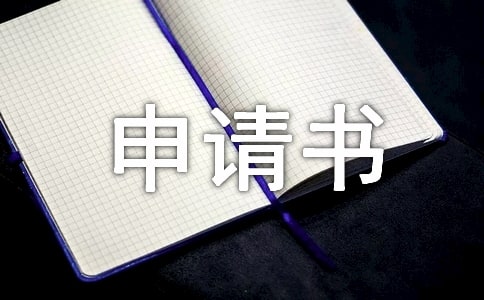實(shí)用的教師學(xué)習(xí)心得體會(huì)錦集20篇
有了一些收獲以后,可以尋思將其寫(xiě)進(jìn)心得體會(huì)中,它可以幫助我們了解自己的這段時(shí)間的學(xué)習(xí)、工作生活狀態(tài)。...三下鄉(xiāng)個(gè)人總結(jié)匯編20篇
總結(jié)就是把一個(gè)時(shí)段的學(xué)習(xí)、工作或其完成情況進(jìn)行一次全面系統(tǒng)的總結(jié),它可以促使我們思考,因此我們要做好...- 小學(xué)生作文幫助別人(通用48篇)
- 祝你生日快樂(lè)的句子410句
- 五年級(jí)數(shù)學(xué)上冊(cè)教案(精選20篇)
- 厲行節(jié)約反對(duì)浪費(fèi)心得體會(huì)范文(
- 監(jiān)控工程分包合同(通用16篇)
- 生日快樂(lè)的唯美句子400句
- 人教版二年級(jí)數(shù)學(xué)下冊(cè)教案范文(
- 英語(yǔ)培訓(xùn)行業(yè)工作心得體會(huì)(精選
- 精選大學(xué)英語(yǔ)六級(jí)作文24篇
- 現(xiàn)代教育技術(shù)課程心得(通用37篇
- 汽車(chē)抵押貸款合同(精選15篇)
- 【精選】小學(xué)生活作文51篇
- 以保護(hù)環(huán)境為話(huà)題的作文(20篇)
- 【推薦】企業(yè)年終工作總結(jié)模板匯
- 寫(xiě)名著讀后感(通用34篇)
- 網(wǎng)絡(luò)借貸品牌宣傳語(yǔ)(精選140句
最新范文
- 三下鄉(xiāng)個(gè)人總結(jié)匯編20篇2025-06-19
- 【推薦】企業(yè)年終工作總結(jié)模板匯2025-06-19
- 農(nóng)村小學(xué)校長(zhǎng)述職報(bào)告范文(20篇)2025-06-19
- 公務(wù)接待自查報(bào)告(10篇)2025-06-19
- 鎮(zhèn)環(huán)境保護(hù)工作計(jì)劃范文(精選122025-06-19
- 銀行員工個(gè)人2025工作總結(jié)(精選2025-06-19
- 醫(yī)院甲乳疝外科工作計(jì)劃(精選82025-06-19
- 學(xué)生個(gè)人總結(jié)(通用20篇)2025-06-19
- 銀行支行行長(zhǎng)個(gè)人述職報(bào)告(通用2025-06-19
- 服裝行業(yè)的工作計(jì)劃(通用8篇)2025-06-19

三下鄉(xiāng)個(gè)人總結(jié)匯編20篇
總結(jié)就是把一個(gè)時(shí)段的學(xué)習(xí)、工作或其完成情況進(jìn)行一次全面系統(tǒng)的總結(jié),它可以促使我們思考,因此我們要做好歸納,寫(xiě)好總結(jié)。我們...
- 財(cái)政支農(nóng)資金自查報(bào)告(通用16篇2025-06-19
- 大三學(xué)期個(gè)人總結(jié)(20篇)2025-06-18
- 材料會(huì)計(jì)個(gè)人工作總結(jié)(通用18篇2025-06-18
- 物業(yè)管理行業(yè)協(xié)會(huì)2025年工作計(jì)劃2025-06-18
- 辦公室文員的個(gè)人總結(jié)300字(通2025-06-18
- 中學(xué)德育主任述職報(bào)告(精選15篇2025-06-18
- 校長(zhǎng)審計(jì)述職報(bào)告(通用11篇)2025-06-18
- 小學(xué)英語(yǔ)三年級(jí)下冊(cè)工作總結(jié)(精2025-06-18
最新范文
- 試用申請(qǐng)書(shū)(通用11篇)2025-06-19
- 古風(fēng)男生名字(精選800個(gè))2025-06-19
- 減肥個(gè)性簽名130句2025-06-19
- 霸氣個(gè)性簽名(精選660句)2025-06-19
- 秋季養(yǎng)生諺語(yǔ)220句2025-06-18
- 網(wǎng)游經(jīng)典網(wǎng)名190句2025-06-18
- 七夕經(jīng)典的個(gè)性簽名260句2025-06-18
- 生活qq個(gè)性簽名390句2025-06-18
- 2025年經(jīng)典個(gè)性傷感簽名360句2025-06-14
- 生日快樂(lè)詩(shī)句390句2025-06-14

試用申請(qǐng)書(shū)(通用11篇)
在當(dāng)今社會(huì)高速發(fā)展的今天我們會(huì)使用上申請(qǐng)書(shū),我們?cè)趯?xiě)申請(qǐng)書(shū)的時(shí)候要切忌長(zhǎng)篇大論。那么申請(qǐng)書(shū)應(yīng)該怎么寫(xiě)才合適呢?下面是小編...
- 實(shí)用的失戀個(gè)性簽名摘錄300句2025-06-13
- 難過(guò)qq個(gè)性簽名760句2025-06-13
- 關(guān)于谷雨刮風(fēng)的諺語(yǔ)160句2025-06-13
- 唯美個(gè)性簽名男生2025-06-11
- 說(shuō)課稿模板(通用13篇)2025-06-10
- 2025年有關(guān)qq傷感個(gè)性簽名150句2025-06-10
- 2025年通用個(gè)性悲傷簽名305句2025-06-10
- 【熱門(mén)】2025年憂(yōu)傷的個(gè)性簽名402025-06-10





